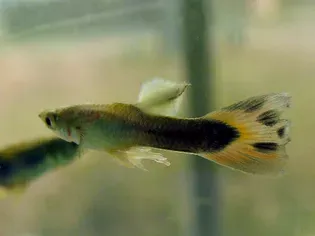Cotton Wool Disease in Freshwater Fish
Updated on 05/26/24

Cotton Wool Disease: A Devastating Fish Ailment and How to Combat It
Introduction
Cotton wool disease, also known as Flexibacter columnaris, is a highly contagious bacterial infection that poses a significant threat to freshwater fish species worldwide. Named for the distinctive white cotton-like lesions it forms on the skin and gills of infected fish, the disease causes extensive tissue damage and can lead to rapid fish mortality if left untreated.
Understanding Cotton Wool Disease
Pathogen:
The causative agent of cotton wool disease is the bacterium Flexibacter columnaris, a Gram-negative rod-shaped bacteria found in freshwater environments. The bacterium thrives in warm, stagnant water conditions, particularly when organic matter is present.
Transmission:
Cotton wool disease is highly contagious and can be spread through direct contact between infected and healthy fish, as well as through contaminated water or equipment. Transmission occurs when the bacterium enters the fish's body through open wounds, gills, or skin abrasions.
Symptoms:
* Skin lesions: White, cotton-like patches on the skin and fins
* Gill lesions: Gray or white growths on the gills, leading to respiratory distress
* Mouth lesions: Rotting or eroding mouth tissue
* Fin rot: Deterioration and disintegration of the fins
* Other symptoms: Lethargy, loss of appetite, and erratic swimming
Lifecycle of Flexibacter columnaris:
1. Bacteria enters the fish's body through wounds or gills.
2. Bacterium multiplies rapidly in the fish's tissues, producing toxins that damage cells and tissues.
3. White, cotton-like lesions appear on the skin and gills.
4. Extensive tissue damage and organ dysfunction occur.
5. Fish mortality ensues if left untreated.
Diagnosis:
Diagnosis of cotton wool disease typically involves a physical examination of the affected fish and a microscopic examination of gill or skin scrapings. The presence of Flexibacter columnaris bacteria confirms the diagnosis.
Treatment:
Treating cotton wool disease requires prompt action to prevent further spread and mortality. Antibacterial medications are the primary treatment, with erythromycin and oxytetracycline typically used. In severe cases, other treatments such as hydrogen peroxide baths or copper sulfate treatments may be necessary.
Prevention:
Preventing cotton wool disease is crucial to maintaining healthy fish populations. Key preventive measures include:
* Maintaining optimal water quality: Ensure proper filtration, aeration, and water temperature control.
* Quarantining new fish: Isolate new fish for observation before introducing them to the main tank to prevent introducing infected specimens.
* Avoiding overcrowding: Overcrowding increases stress levels and weakens fish immune systems, making them more susceptible to infections.
* Disinfecting equipment: Regularly disinfect nets, fish handling tools, and tanks to prevent the spread of disease.
* Treating open wounds: Treat any open wounds or injuries promptly to prevent infection.
Examples of Cotton Wool Disease Outbreaks:
* Channel catfish: In Mississippi, USA, a cotton wool disease outbreak in channel catfish led to a significant economic loss for the aquaculture industry.
* Rainbow trout: In New Zealand, an outbreak in rainbow trout caused widespread mortality and disrupted fish farming operations.
* Guppies: Cotton wool disease has also affected guppies in home aquariums, highlighting the prevalence of this infection in ornamental fish.
Conclusion:
Cotton wool disease is a devastating fish ailment that can decimate fish populations if left untreated. Understanding the pathogen, transmission, symptoms, and treatment options is crucial for fish health professionals and hobbyists alike. By implementing preventive measures and seeking prompt treatment, we can safeguard our fish stocks and ensure their well-being.
Explore More Pets

Freshwater Aquarium Filters
How to Deal With Cloudy Aquarium Water

Saltwater Aquarium Filters
How Do You Remove Chloramines From Tap Water?

Freshwater Aquariums & Habitat
Can I Keep My Koi Fish Inside?

Saltwater Aquariums & Habitat
14 Best Floating Plants for Your Aquarium

Freshwater Fish Health
How to Treat Ich on Freshwater Fish

Saltwater Fish Health
Fin Rot in Aquarium Fish

Freshwater Aquarium Filters
How to Do Aquarium Water Changes

Saltwater Fish Health
How Do Fish Get Parasites?
